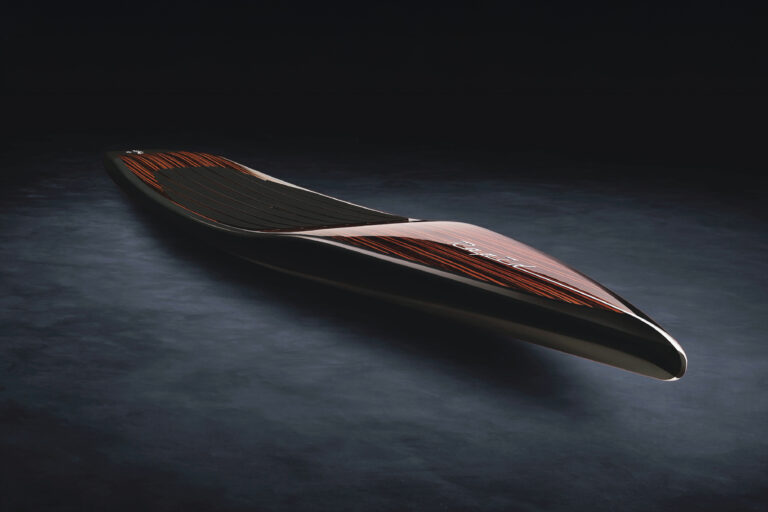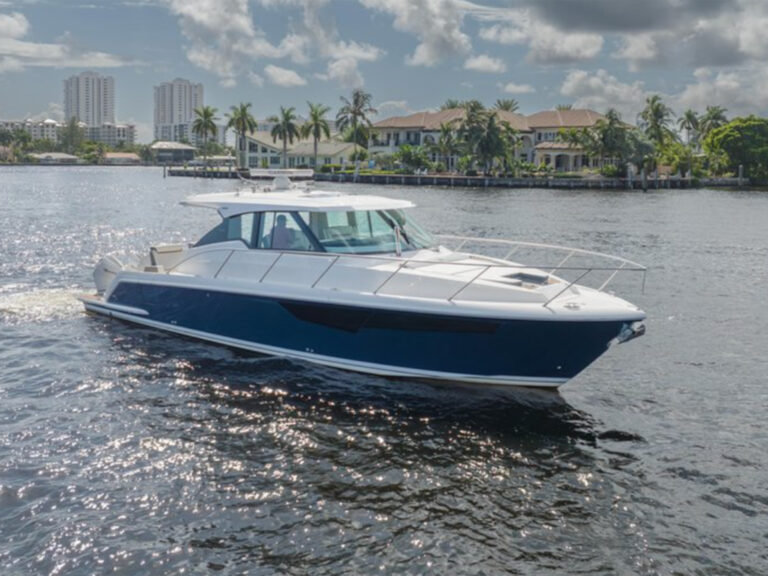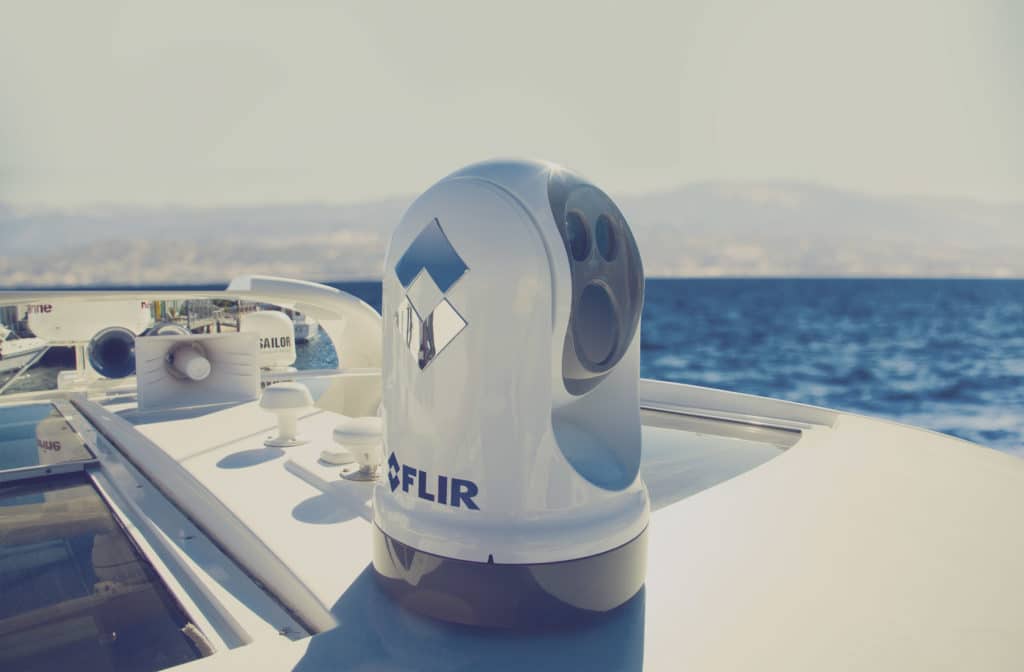
Some years ago, i was invited to sail aboard a Gunboat 66 from Honolulu, Hawaii, to Lahaina, on Maui’s northwest flank. It was me, her owners, the crew, the late, great lensman Bobby Grieser and Pickles, the owners’ Jack Russell terrier. Our final night featured a celebratory meal at the Lahaina Grill, with Pickles dutifully standing watch back aboard. While we’d remembered to switch on the masthead tricolor before venturing ashore, we weren’t the only boat in the anchorage on that inky-dark, January eve, and finding our way home proved challenging in the gathering swell. Just as the yacht’s owner, Bruce, recalled that sharks frequent Maui in midwinter, we caught Pickles’ bark. Looking back today, I realize that better night-vision technology would have made our RIB ride much smoother.
The desire to peer through darkness is a wish as ancient as the mariner himself, and modern yachtsmen are buoyed by technology such as radar and thermal-imaging cameras. While the latter has historically been expensive, FLIR’s M100 and M200 thermal-imaging cameras are poised to be more economical, making the technology available for a wider variety of vessels and applications.
Unlike traditional night-vision systems that require a certain amount of ambient or projected light to work, thermal-imaging cameras detect minute differences in the thermal energy emitting from all objects warmer than absolute zero (minus 459.67 degrees Fahrenheit). The cameras passively gather this information, using it to render real-time video imagery that’s streamed to a networked display, requiring little user input. “If you can watch TV, you can use thermal night vision,” says Andrew Teich, FLIR‘s president and CEO.
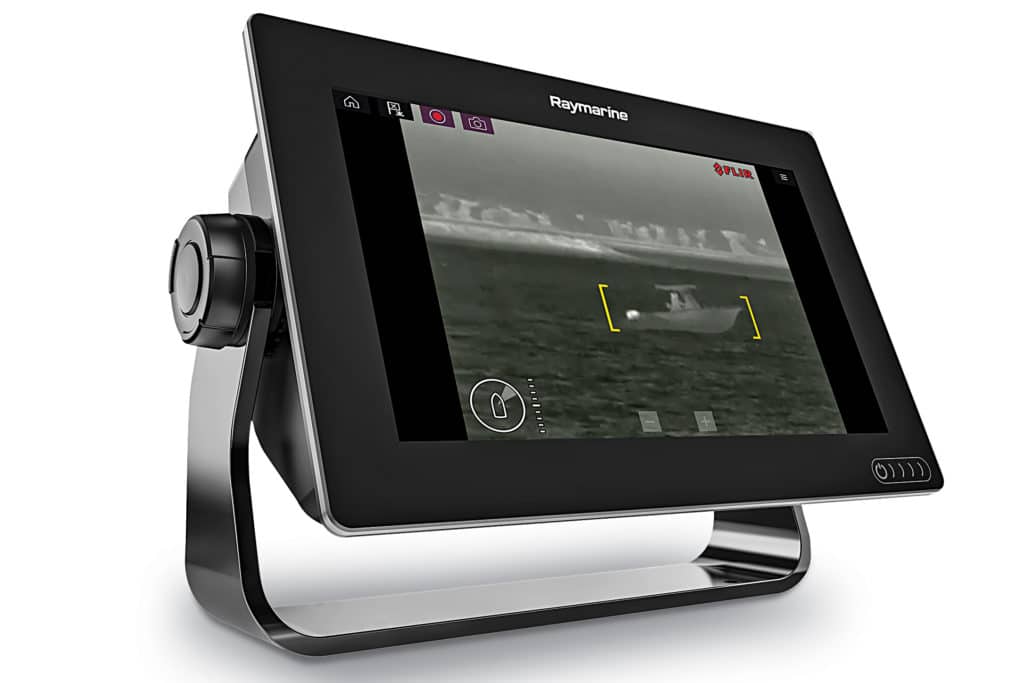
If you’re seeking a professional-grade thermal-imaging camera, FLIR’s yet-to-be-released M500 system offers a glimpse of mil-spec tech. It delivers a triple payload: thermal-imaging cameras, daylight-imaging cameras and a powerful LED spotlight. The M500 (about $175,000) cools its sensor to cryogenic temperatures to remove thermally induced noise and bolster the camera’s spectral-filtering capabilities. This extra capability and componentry requires government approval (currently pending) before the M500 can be sold commercially. Need-it-now customers can also consider the already available M400XR ($85,000), which uses an uncooled Tau 2.7 core to deliver 640-by-480 image resolution.
Much like digital cameras, a thermal-imaging camera’s cost lies mostly in its thermal core, or sensor. In the case of FLIR’s M100 and M200 cameras, that core is an uncooled Boson VOx microbolometer that detects thermal differences of roughly 60 millikelvins, or (ballpark) one-ninth of a degree Fahrenheit. According to FLIR, the M100 and M200’s detectors can spot a man overboard from 1,500 feet and a vessel from 0.67 nautical miles. Additionally, both cameras have 4x continuous digital zoom and FLIR’s Digital Detail Enhancement software, plus the ability to view real-time imagery via a networked screen, multifunction display (MFD) or smartphone/tablet. Owners can also view the camera’s footage remotely, using its built-in Web server, and both cameras can record footage onto a networked MFD’s internal storage or third-party microSD card.
While the two cameras are largely identical, the M100 ($2,495) was designed as FLIR’s price-conscious, fixed-mount thermal-imaging camera. It can articulate vertically through 200 degrees, and it’s locked along its azimuth — or horizontal — axis. The M200 ($3,495) has all of the M100’s capabilities plus the ability to pan 360 degrees horizontally. “We left the ability to tilt [in the M100] because a planing powerboat’s camera angle can radically change,” says Jim McGowan, FLIR’s marketing manager for the Americas, who explained that this movement allows users to match their camera’s viewing angle with their boat’s running angle — a feature that helps enable FLIR’s ClearCruise IR Analytics software.
FLIR Systems has long built thermal-imaging solutions for myriad applications, including automotive, aviation, military and industrial safety. In the marine industry, FLIR’s thermal-imaging cameras play nicely with MFDs from all major marine-electronics manufacturers. In 2010, FLIR acquired Raymarine, and while the manufacturer ensures that its cameras remain brand-agnostic in terms of compatibility, this ownership allows FLIR to add proprietary features for Raymarine owners. Both the M100 and M200 are Ethernet-enabled and will network with any MFD that accepts video over IP, but ClearCruise IR Analytics software works only when one (or more) of these cameras is paired with a Raymarine quad-core Axiom-series MFD.
When enabled, ClearCruise IR Analytics runs in the background anytime the camera is on, constantly scanning the course ahead for “nonwater” objects. Once identified, the camera and the Axiom MFD collectively determine if the target’s speed and bearing are a threat. Dangerous targets have a bright-yellow frame, plus ClearCruise IR Analytics triggers top- level auditory and visual warnings on the MFD. “The goal is to make the camera work for you, even when you’re not looking at it,” says McGowan, who compared ClearCruise IR Analytics to the automatic radar plotting aid (ARPA) feature on some high-end radars.
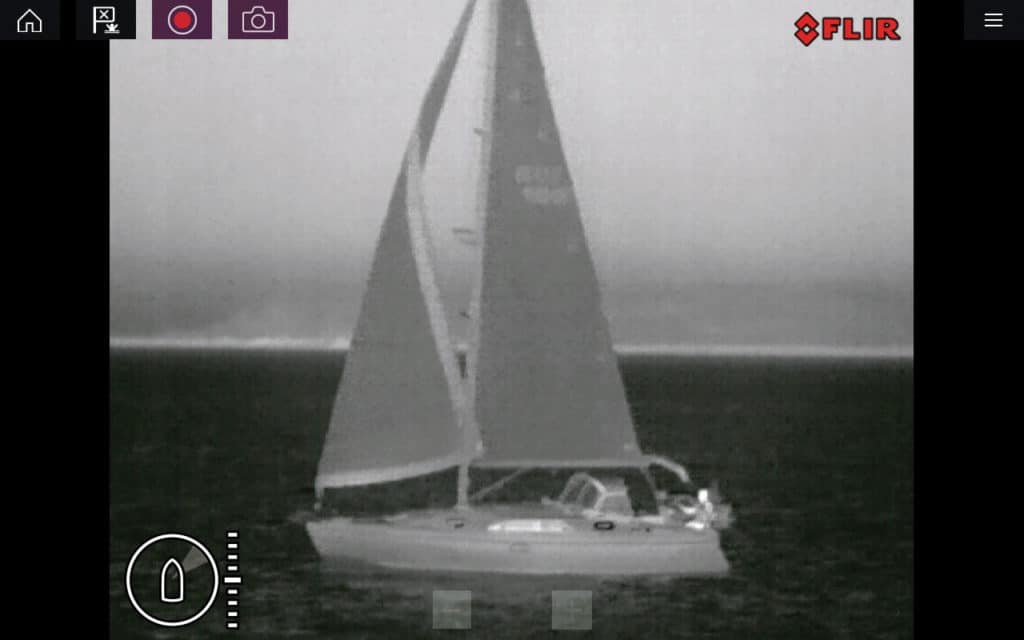
It’s important to consider any camera’s effective operating range. Basic math reveals that if you’re cruising at 20 knots, you’ll cover 1,500 feet (MOB-detection range) in 44 seconds, and you’ll burn up 0.67 nautical miles (vessel-detection range) in two minutes. So, much like with forward-looking sonar or radar, reaction time is dictated by boat speed: Lower rpm equates to more sand in the proverbial hourglass.
“The M100 and M200 are so small, they fit on any vessel, and they’re right at home on a tender,” says McGowan, who explained that while thermal-imaging cameras complement radar and make for fantastic rear-facing, backup and/or security cameras on large yachts, owners of smaller yachts and well-appointed tenders could opt for thermal imaging over radar. “Before [these cameras], the least-expensive 320-by-240 pan, zoom, tilt camera that we sold was $9,000,” McGowan says.
While the price drop is great news, all thermal-imaging cameras are hampered by rain, heavy fog or minimal thermal difference between air and water temperatures. To help counter thermal imaging’s environmental limitations, the M100 and M200 have three preprogrammed operating modes (day, night and docking), as well as eight different user-selected color palettes. The latter can make a significant difference when searching for objects or even small boats. Additionally, McGowan recommends keeping the camera’s sensor trained on the water, leaving only a slice of horizon in its frame as a visual reference.
If your big night ashore unfurls under reasonably friendly skies, the M100 or the M200 could be the ideal tender companion to find your way back aboard, without the need of a barking Jack Russell terrier.





